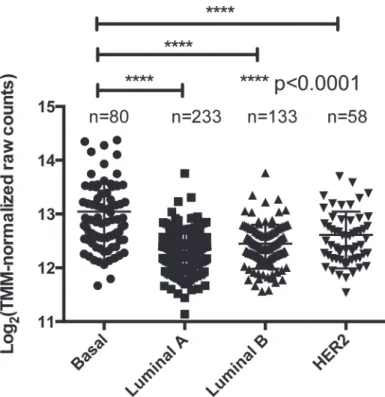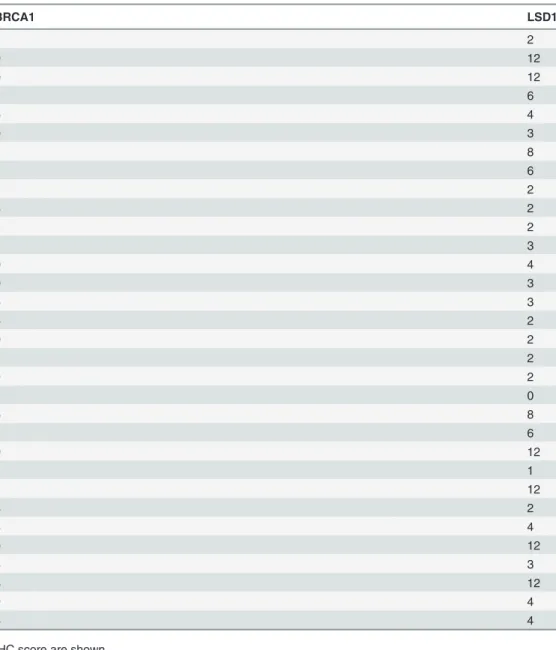LSD1 overexpression is associated with poor prognosis in basal-like breast cancer, and sensitivity to PARP inhibition.
Texto
Imagem




Documentos relacionados
brasiliensis Pb339 yeast cells correlated with decreased recovery of intracel- lular/adhered yeasts from IFN- c -activated macrophages and from lungs of BALB/c mice infected with the
Enhancement of insulin-like growth factor signaling in human breast cancer: estrogen regulation of insulin receptor substrate-1 expression in vitro and in vivo.. Activation
CONCLUSION: We concluded that Hypoxia inducible factor-1 a was associated with a poor prognosis and that vascular endothelial growth factor-C could be used as a predictive factor
Recomendável: hidropisia (pronuncia-se hidropizía), conforme consta nos dicionários de português. Hidropsia e hidrópsia, apesar de errôneos, são termos amplamente
High PD-L1 expressing basal breast cancer cell lines (N = 12) demonstrate higher levels of STAT1 expression and lower levels of IRF2BP2 compared to low PD-L1 expressing cell lines (N
Grow th inhibition of both M CF- 7 and Hs578T human breast cancer cell lines by vitamin D analogues is associated w ith increased expression of insulin-like.. grow th factor
To provide for the first time insight into NDRG2 biology beyond the assumed tumor suppres- sive role in luminal- and basal B-type breast carcinoma cell models, we established
Since high PD-L1 expression is associated to canonical prognostic factors of breast cancer, patients with positive PD-L1 expression may present with more extensive lymph node


